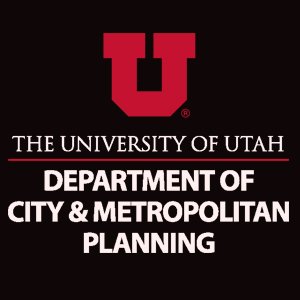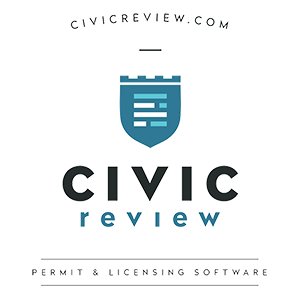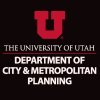How Parking Destroys Cities
May 19, 2021 by admin
Urban Planning
Lewis mumford was suspicious of parking. “The right to access every building in a city by private motorcar,” he wrote in The City in History, “in an age when everyone owns such a vehicle, is actually the right to destroy the city.” Jane Jacobs, who disagreed with Mumford on many counts, agreed here. Parking lots, she said in The Death and Life of Great American Cities, were “border vacuums”: inactive spaces that deadened everything around them.
Mumford and Jacobs published those lines in 1961, when most United States cities were 15 years into an experiment called “minimum parking requirements”: mandates in zoning codes that forced developers to supply parking on-site to prevent curb congestion. In postwar America, development was booming, and neighbors were worried that new residents would make street-parking impossible. Decades later, parking requirements still exist nationwide. In Los Angeles, where I live, new apartment buildings must have at least one parking space per unit; retail buildings need one space per 300 square feet; and restaurants need one space for every 100 square feet of dining area.
Parking minimums take the cost of that space—a cost that should be borne by drivers—and push it onto developers, hiding it in the cost of building. Sometimes this means a project can’t be built at all. At other times, it makes projects more expensive: In downtown L.A., parking usually costs developers more than $50,000 per space to build. Walt Disney Concert Hall, a cultural landmark that is home to the Los Angeles Philharmonic, cost $274 million to build. Of that total, the underground parkingstructure, which is not a cultural landmark (it’s an underground parking structure), accounted for $100 million.
Because parking requirements make driving less expensive and development more so, cities get more driving, less housing, and less of everything that makes urbanity worthwhile. This process is subtle. Many mayors today declare their support for walkable downtowns and affordable units. But cities are built at the parcel, not from mayors’ podiums. And parcel by parcel, the zoning code quietly undermines the mayors’ grand vision. A commercial requirement of one parking space per 300 square feet means developers will put new retail in a car-friendly, pedestrian-hostile strip mall. And a requirement of one parking space per 100 square feet for restaurants means the typical eating establishment will devote three times as much space to parking as it will to dining. America did not become a country of strip malls and office parks because we collectively lost aesthetic ambition. These developments are ubiquitous because they are the cheapest way to comply with regulations.
For each individual project, parking requirements can seem reasonable; in many cases, they mollify worried neighbors. A zoning board in Boston, for example, recentlyrejected a homeless housing project when nearby residents said it had too little parking. The project might still get built, with fewer units and more parking, and perhaps to the casual observer the difference is small. Over many parcels and many decades, however, the units lost and parking spaces gained add up, and the sum of our seemingly reasonable decisions is an unreasonable, unaffordable, and unsustainable city.
This city, the parking city, can’t have row houses and townhouses that sit flush with one another and come right up to the street. It can’t reuse handsome old buildings that come straight to their lot line, so those buildings stay empty. It can’t tuck quirky buildings onto irregularly shaped parcels, so those parcels stay vacant. (Manhattan’s famous Flatiron Building is an impossibility in a city with parking requirements.) The parking city is one where people drive into or under buildings, rather than walk up to them. It is a city with listless streets, one that encourages vehicle ownership, depresses transit use, and exudes antagonism toward people without cars.
Large portions of New York, Chicago, Boston, and Philadelphia, if they burned down tomorrow, couldn’t be rebuilt, because according to modern zoning, their buildings don’t have “enough” parking. Brownstone Brooklyn, after all, is largely devoid of parking; so is Boston’s famed North End. Zoning defenders might call this point moot, because those places are different—parking can be scarce because walking and using transit are easy. But walking and using transit are easy, in part, because parking is scarce. Transit thrives on density, which parking undermines, and parking and walking don’t mix. The short walk to a Manhattan subway stop will take you past attractive store windows, which come right up to a sidewalk largely uninterrupted by driveways. Walk along an L.A. boulevard, by contrast, and you’ll get a good view not of stores but their parking lots, which means in turn that your walk must be careful rather than carefree—lest a car slide out, cross the sidewalk, and run you over. That pleasant experience comes courtesy of L.A.’s zoning.
None of this is an argument against parking. It’s an argument against required parking. In an age of ostensible concern about global warming, it shouldn’t be illegal to put up a building without parking and market it to people without cars. If neighbors worry that people will move in and park on the street, cities should meter their streets. Curb space is valuable public land. Parking requirements or no, cities will have curb shortages as long as they give the curb away.
There are promising signs of reform. Buffalo, New York, recently abolished its parking requirements. Minneapolis has done the same. San Diego and San Francisco have scaled them back, and California may be on the cusp of rolling them back statewide. In most cities, however, parking requirements still reign unchallenged.
Cars do need parking. But cars need many things, and most get supplied without being mandated. Suppose that tomorrow a mayor proposed minimum gasoline requirements: a set number of fuel pumps on every parcel. Most people would consider that outrageous. They’d observe that the private market supplies gas just fine, that it’s not a big deal to travel a small distance for fuel, and that putting pumps on every parcel would just squander valuable land and encourage driving.
They’d be right. But what’s true of gas is true of parking too. Sometimes the hardest damage to see is the damage we are already doing. America’s disastrous experiment with parking requirements should end.
Associate urban-planning professor at the UCLA Luskin School of Public Affairs
https://www.theatlantic.com/ideas/archive/2021/05/parking-drives-housing-prices/618910/
Recent News
- » Hurry, it’s the final week to grab your conference tickets at regular prices!
- » 2024 APA UT Spring Conference: Cedar City, UT. The Call For Sessions is Currently Open.
- » Planning in the news: BYU students aim to eliminate parking woes through AI tracking system
- » Planning in the news: Living in Daybreak- What residents say the Utah community is really like
- » Planning In The News: Planning Commission green lights proposed ban on gas stations near waterways and parks
- » As states argue over who should cut their Colorado River use, a new plan puts the environment first

































